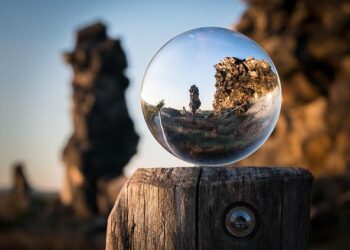ESA‘s Euclid mission is designed to explore the composition and evolution of the dark Universe. Euclid will explore how the Universe has expanded and how structure has formed over cosmic history.
Recently, the mission released a treasure trove of the Universe—five unprecedented new views. The never-before-seen images show how Euclid solved cosmic puzzles and helped scientists discover rogue planets, investigate the evolution of the Universe, and research unknown matter by using lensed galaxies.
Abell 2390:

Credit: ESA/Euclid/Euclid Consortium/NASA, image processing by J.-C. Cuillandre (CEA Paris-Saclay), G. Anselmi
Euclid’s image of the galaxy cluster Abell 2390 shows more than 50,000 galaxies. It also showcases a stunning example of gravitational lensing, with some of the massive curved arcs in the sky being numerous views of the same far-off object.
The light from stars ripped from their parent galaxies and now sitting in intergalactic space is visible across the cluster in Euclid’s cutaway image of Abell 2390. Euclid’s specialization is viewing this “intracluster light,” and these stellar orphans might help us “see” the location of dark matter.
Euclid scientists are also studying how the masses and numbers of galaxy clusters in the sky have changed over time, revealing more about the history and evolution of the Universe.
Messier 78:

Credit: ESA/Euclid/Euclid Consortium/NASA, image processing by J.-C. Cuillandre (CEA Paris-Saclay), G. Anselmi
This gorgeous picture shows the colorful star nursery known as Messier 78, which is covered in interstellar dust. Using its infrared camera, Euclid gazed deep into this nursery, revealing previously undiscovered star and planet formation zones and documenting its intricate filaments of gas and dust in unparalleled detail.
NGC 6744:

CREDIT:
ESA/Euclid/Euclid Consortium/NASA, image processing by J.-C. Cuillandre (CEA Paris-Saclay), G. Anselmi
Euclid presents NGC 6744, an exemplar of the type of galaxy that presently forms the majority of stars in our Universe. With a vast field of view encompassing the entire galaxy, Euclid can capture fine detail on tiny spatial dimensions and spiral structures on larger scales. This includes depicting feather-like lanes of dust erupting as “spurs” from the spiral arms.
Abell 2764 (and bright star):

CREDIT:
ESA/Euclid/Euclid Consortium/NASA, image processing by J.-C. Cuillandre (CEA Paris-Saclay), G. Anselmi
The image below displays the Abell 2764 galaxy cluster (the top right), which comprises hundreds of galaxies surrounded by a large dark matter halo. Euclid captures a wide range of objects in this region of the sky, such as background galaxies, farther-off clusters, and interacting galaxies that produce star shells and streams. Thanks to Euclid’s vast field of view, astronomers could gain a comprehensive image of Abell 2764 and its environs. This allowed them to determine the cluster’s radius and observe its periphery while preserving distant galaxies in focus.
Another star visible in this image is V*BP-Phoenicis/HD 1973, a very bright foreground star in our galaxy located in the southern hemisphere. It is almost bright enough for humans to see. When we look at a star through a telescope, its light is scattered outwards into a diffuse circular halo due to its optics.
Dorado Group:

CREDIT:
ESA/Euclid/Euclid Consortium/NASA, image processing by J.-C. Cuillandre (CEA Paris-Saclay), G. Anselmi
In the Dorado galaxy group, Euclid depicts galaxies evolving and merging “in action,” with stunning tidal tails and shells appearing due to continuous interactions. Euclid’s versatility is demonstrated by this image, which shows a wide range of galaxies, from very bright to very dim. Euclid’s ability to record structures in one frame, regardless of size, is due to its unique mix of huge field-of-view, amazing depth, and excellent spatial resolution. These features include star clusters, galactic cores, and tidal tails.
ESA noted in its blog, “The images obtained by Euclid are at least four times sharper than those we can take from ground-based telescopes. They cover large patches of sky at unrivaled depth, looking far into the distant Universe using both visible and infrared light.”
“While visually stunning, the images are far more than beautiful snapshots; they reveal new physical properties of the Universe thanks to Euclid’s novel and unique observing capabilities.”
>>> Read full article>>>
Copyright for syndicated content belongs to the linked Source : Tech Explorist – https://www.techexplorist.com/esa-euclid-celebrates-first-science-new-views-universe/84161/#utm_source=rss&utm_medium=rss&utm_campaign=esa-euclid-celebrates-first-science-new-views-universe















![[News] Japan Develops 10nm Nanoimprint Technology, with Potential to Tackle EUV Bottleneck – TrendForce](https://earth-news.info/wp-content/uploads/2025/12/329851-news-japan-develops-10nm-nanoimprint-technology-with-potential-to-tackle-euv-bottleneck-trendforce-360x180.jpg)















